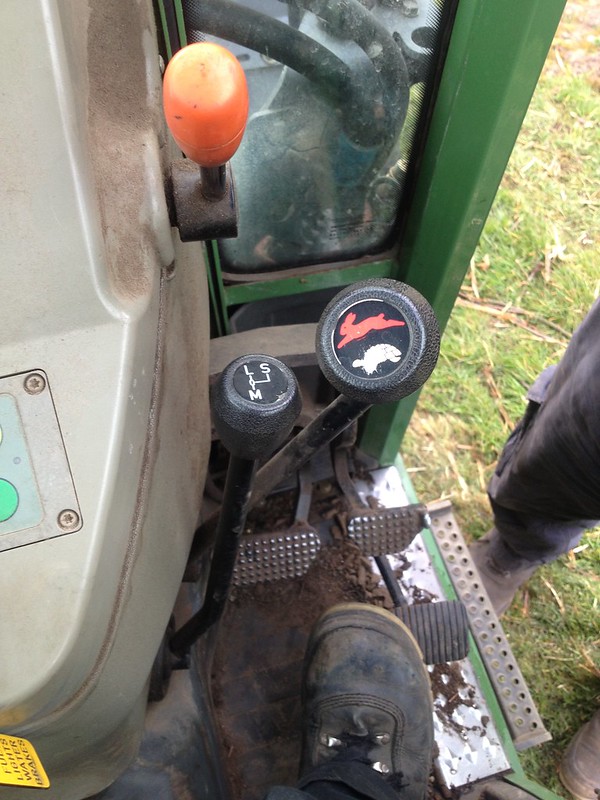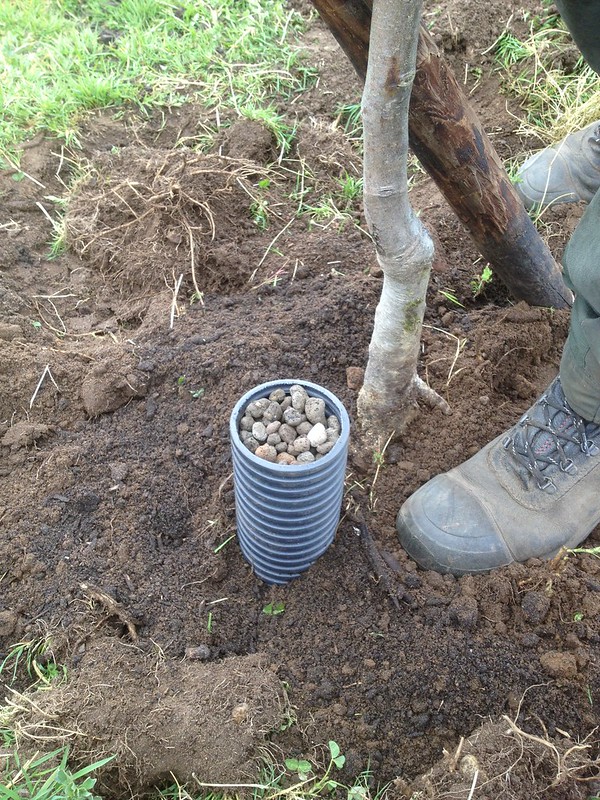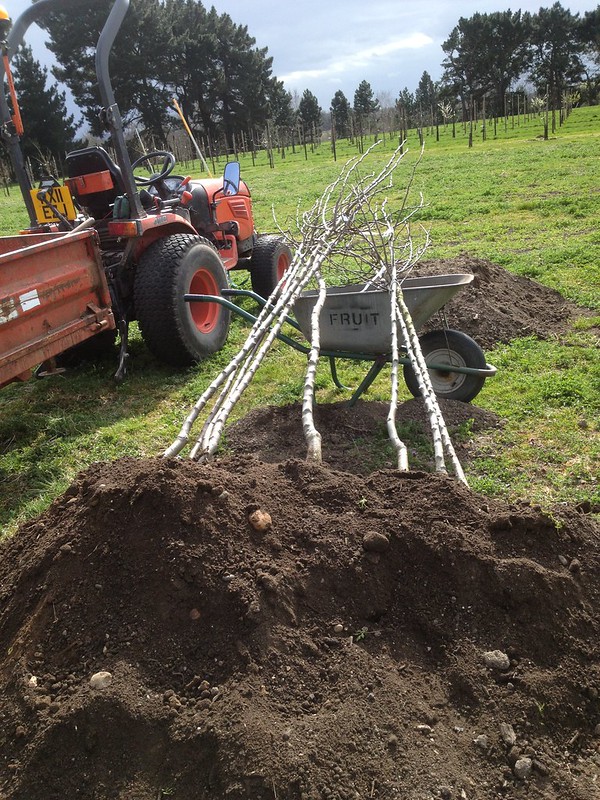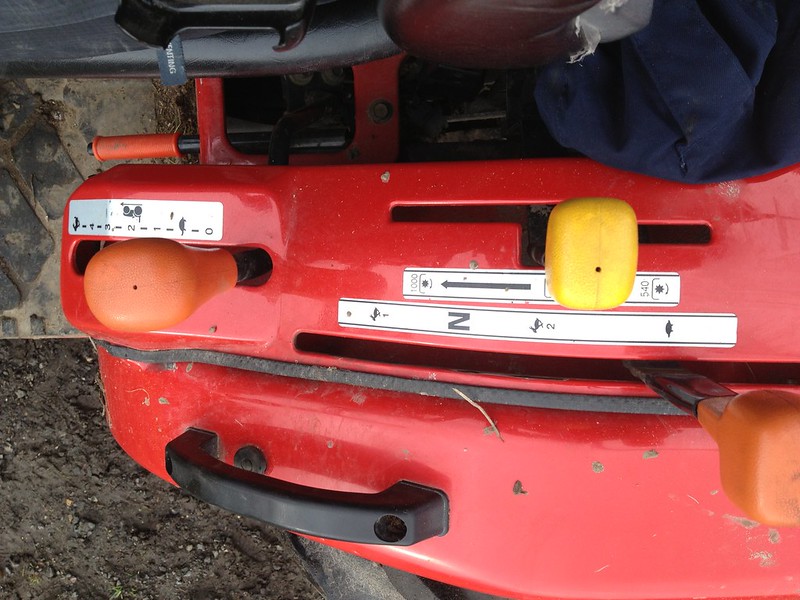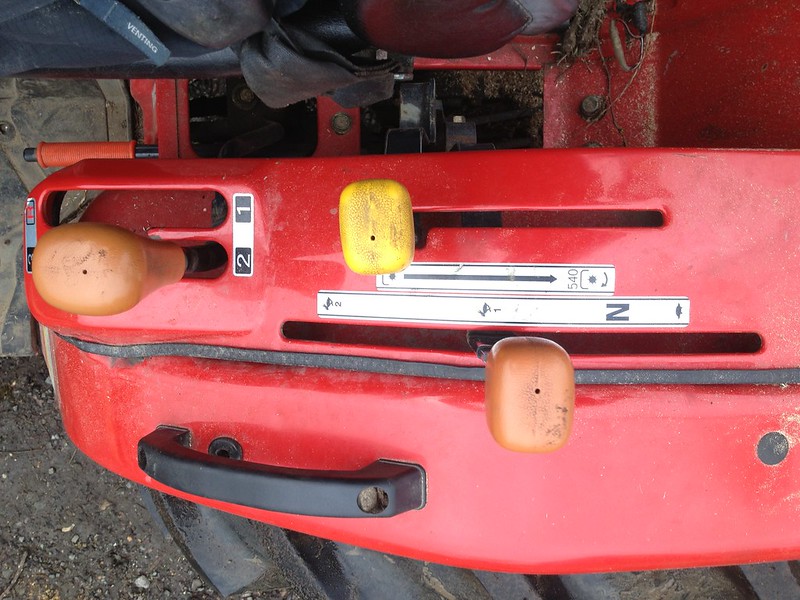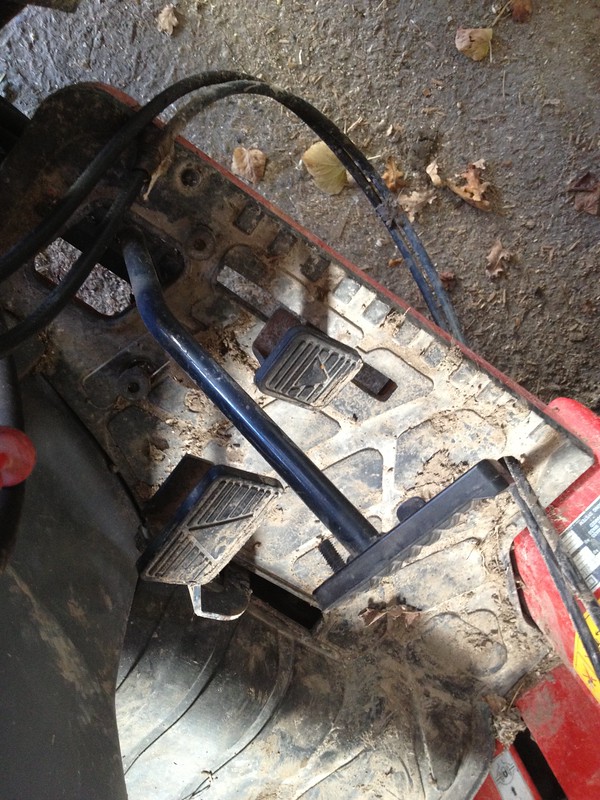 |
| My first tractor and trailer |
I first drove a tractor, with a trailer, on 24th May 2013. And, for some curious reason, I really really loved it.
Since then, I have driven two other tractors: a middle sized one with trailer, and (quite a lot of) a ride-on mower.
 |
| Compact Kubota with mowing deck |
 |
| Old mid-size agricultural John Deere |
Over the last 3 days (1.5 years from first mounting on a tractor) I have - with much delight - attended a course leading to a NPTC qualification in "Agricultural Tractor Driving & Related Operations".
 |
| Agricultural tractor; manual gear & hydrostatic compact tractors |
There would be so much to write about what I learnt, by working with 3 different tractors at the same time: so what do tractors have in common?
- Safe practices
- Forward movement
- Fore-end implements
- Mounted attachments
Safe practices
These can be summarised as:
know your tractor and implements;
know the area you are working in;
maintain your machinery (i.e. greasing) & perform regular safety checks (fluids, external appearance, air intake, wheels & bolts, belts etc);
always use a safe stop and make implements safe (when the tractor is stationary and off, lower them to the ground; when working on them, support any hydraulic or unstable equipment with ram stops, axel stands etc);
never be around a moving tractor or in between tractor and implements; make sure nobody else is either;
anything that rotates, is hot or belt-driven is particularly dangerous: guards serve an important function;
the tractor is more stable the lowest you keep your implements and loads.
Agricultural and horticultural work causes some 50 deaths a year in the UK, so it's rather dangerous and the HSE has issued several guidelines, among them
one on working with tractors and on
working with machinery and several pieces of legislation apply:
COSHH, Noise at Work (protection over 85 dB), Vibration at Work, Manual Handling, PPE, RIDDOR, First Aid at Work - in terms of health
H&S at Work (safety is everyone's job), Management of H&S at Work (risk assessments), PUWER (regular checks & maintenance), LOLER (fore-end loaders and lifting attachments, not the three point linkage though), Corporate Homicide & Manslaughter Act - in terms of safety
and, of course, the Countryside and Wildlife Act (avoid disturbance to wildlife).
Forward movement
Orange is the colour (or at least there is an attempt to standardise forward movement levers and buttons on tractors).
Forward movement is determined by at least four (not always separate) controls, once you have started the engine (remember tractors are diesel engines so they have cold start key positions too and manual gear ones need the clutch pressed down to start):
Of course brakes come in under forward movement: when a clutch is fitted, it has to be used together with the braking pedal. And of course the parking break needs always to be used in a safe stop.
Agricultural tractors often have extra features that allow for nimbler and safer movement of the wheels:
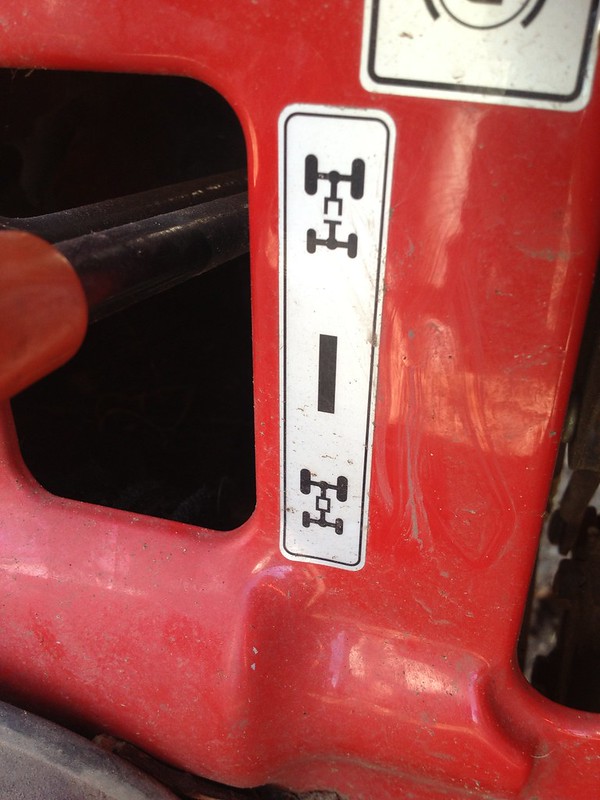
4 wheel drive, to be engaged only on uneven and steep ground rather than on hard surfaces, it gives grip to the front wheels (in addition to the rear wheels that pushes forward);

differential lock: it engages both rear wheels in traction, to be used when badly stuck, it is in the way of turning (as that is what the differential is for);

independent breaks allow the operator to break on a single rear wheel at a time to perform very
tight turnings. However, pedals should always be locked together when such feature is not needed, and breaks should be tested regularly to check they break in a straight line (as using them separately causes the wheels to wear out at different rates)
Fore-end loaders
Fore-end loaders are covered by the LOLER regulations and are manoeuvred with a joystick with the following functionalities:
- 12 o'clock position: arm down
- 6 o'clock position: arm up
- 9 o'clock position: arm curling upwards
- 3 o'clock position: tipping
Mounting equipment on the loader arm is quite straightforward, once you learn how. I filmed a little video while we were practising with a bucket: aligning the arm with it, hooking it up, then curling the arm to swing it into position.
In the small tractor, one would need to lock the bucket in place manually (which requires a safe stop), to complete the procedure, while, in the bigger one, it would lock itself automatically in place. In both cases, the lock needed manual undoing to release the bucket.
Mounted attachments
I had previous experience of mounted attachments: hydraulically powered ones, both
towed (trailers with hydraulic tipping) and hitched (a hydraulic grass collector), and a PTO-powered mowing deck mounted underneath a tractor, but never of rear-mounted and PTO-driven implements.
A PTO (Power Take-Off) - the shaft that distributes power from the engine to the attached implements and sticks out at the back of the tractor where attachments can make use of it - is one of the most dangerous part of a tractor. It can turn at 540 rpms (6 splines) or 1000 rpms (21 splines), depending on the tractor set up, but in either case it can cause serious harm (so much so it deserved a specific
HSE leaflet) so it needs to be protected with a guard, like the other rotating parts in the tractor. It is activated by levers/buttons: yellow is their colour and the clutch (if fitted) is involved.
 |
| Handle to adjust hydraulic response (left) |
Implements that get powered by the PTO are usually mounted on the
3-point linkage for safety and traction and the response of the hydraulic arms can be adjusted to cope with differing weights (position control); however, the weight of the implement needs to be appropriate for the tractor not to roll over (with or without ballast) and for the lifting arms to support: the tractor we used was fitted with category 1 linkage balls so the implement needed category 1 hitch pins, which are only 22 mm in diameter and therefore can only support a certain weight. Category 2 pins are 25 mm in diameter and there is also a category 3.
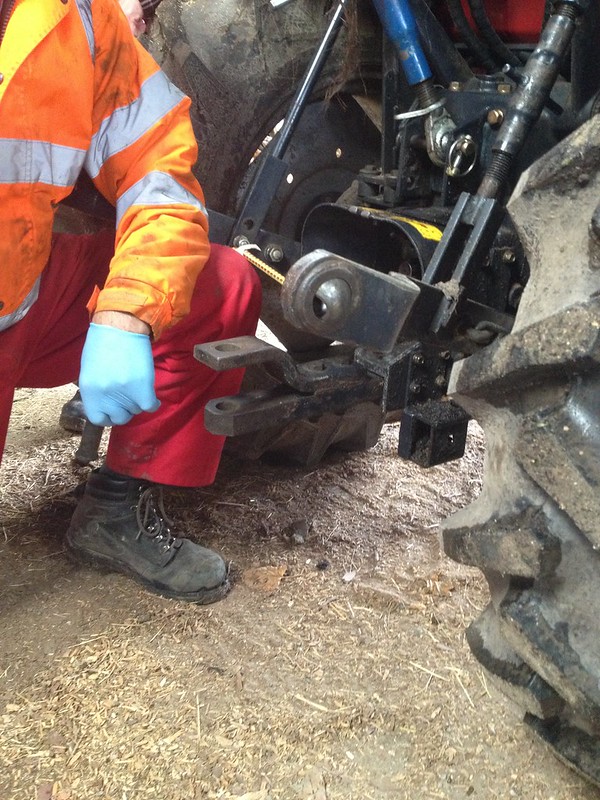 |
| 3 point linkage and drawbar |
Depending on the hitched implement, one may or may not have to remove the drawbar to avoid fouling the PTO shaft or other parts of the implement. In the case of towed implements that use the PTO shaft, one has to make sure the drawbar or pin do not interfere with it.
On one of the tractors we used, ballast was hitched on the back to counterbalance the fore-end loader, but it did not interfere with the drawbar so the latter was left in. But when we practice mounting the fertiliser spreader, we had to remove the drawbar as the first thing.
Then we proceeded as follows:
 | |
| Fertiliser spreader on the ground | |
|
- reversing the tractor to the implement;
- lowering the hydraulic lower links;
- attaching the implement to the fixed link by way of a lynchpin;
- attaching the implement to the adjustable lower link by way of a lynchpin;
- attaching and fixing the implement rotating shaft and guard to the PTO with a pin and restraining device (chain), to avoid that the guard rotates with the shaft;
- attaching the top link to the implement;
- raising the lifting arms so that the implement shaft was on a straight line with the PTO for optimal use of power;
- adjusting the top link so the implement was parallel to the ground (even thread uncovered, locked);
- tightening the adjustable stabilisers so that the implement did not sway side to side;
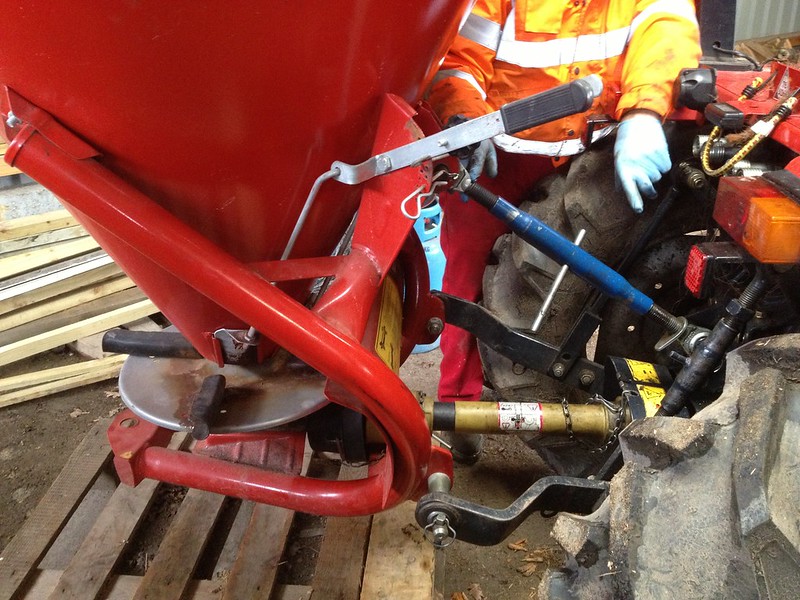 |
| Fertiliser spreader mounted |
Once the implement was up, we tested it would work:
turning the tractor on, and, with the clutch pressed, engaging the PTO; some PTOs are very noisy and 80dB is the maximum accepted noise level without ear protection, so appropriate PPE might be needed;
bringing the rpms to the required level (in our case 2300 - indicated on the control panel tachometer).
It is of course dismounted by following the same procedure, in the inverse order.
Some modern tractors, especially the bigger ones, have sensors on the top link for a feature called "draft control": this applies to soil engaging implements, and is designed to adapt the depth of the tool around obstacles so the implement is not damaged or the tractor is not jackknifed. If there is no draft control, one can only use shallow soil engaging implements.
Oh well, now I just have to put all of the above into practice in my exam... wish me good luck!

